https://www.youtube.com/watch?v=30F1nIF1-v8
How to Fix Espresso Extractions - Timing, Taste & More
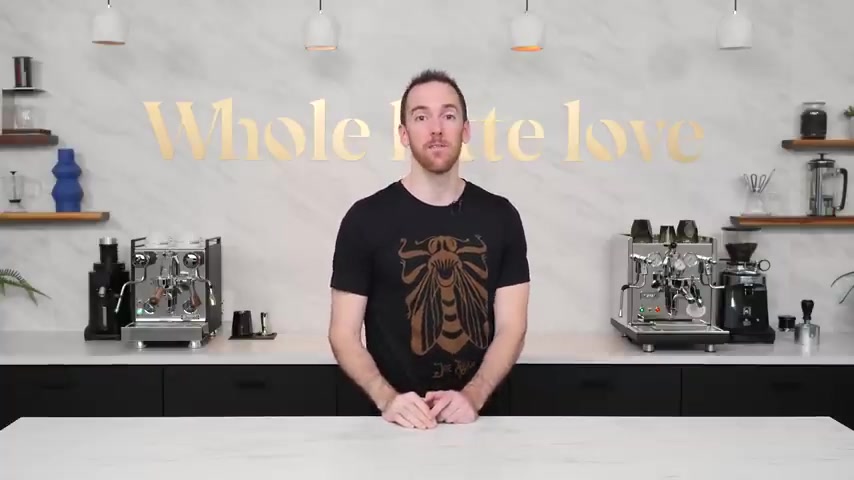
Hey , everyone .
I'm AJ from Whole Latte love .
Today .
I'm gonna go over some of the most common issues that people encounter when starting out making espresso and how to fix them .
I'll cover common questions like why is my shot running too fast or too slow ?
Why does my espresso taste sour or bitter ?
Where's the crema or why am I getting channeling before we dive into each one ?
One common theme that spans across all of these questions and more is consistency without controlling as many variables as possible .
With good equipment and techniques .
It will be much , much harder to achieve desirable and repeatable results .
So as I present different issues and solutions , I strongly suggest you make one change at a time while troubleshooting and keep everything else as consistent as possible .

So you've got your new Espresso machine and grinder , you fill your port of filter up , tamp , activate your bruise , switch your lever and it looks like this or like this .
The first thing to check and adjust is your grind size in general .
If your shot is running too fast , you need to grind finer if it's too slow or not coming out at all grind coarser .
After making a grind size change , depending on your equipment , you may need to purge out a few grams of coffee left from your previous grind cycle to make sure that all of your new grounds have been affected by the adjustment in the spirit of controlling all other variables .
You'll want to keep your coffee dose or the weight of your ground coffee in the port of filter the same .
But how much coffee should you be using in the first place ?
This will largely depend on your filter basket stock , double baskets that come with machines generally hold up to anywhere from 15 to 18 g of ground coffee max .
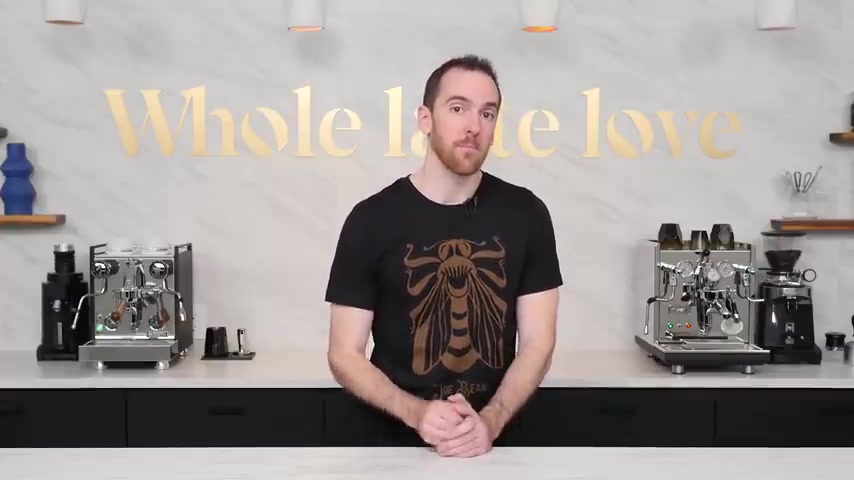
Or you may buy an aftermarket basket that's labeled as an 18 g basket .
That listed dose is an upper limit .
It's completely fine to use less than that .
Just be aware that your puck afterwards may be a little soupier since there's more headroom inside the basket for water to fill up .
If your coffee is spilling out while grinding , or you're seeing the impression of the shower screen in the puck .
After brewing , you're probably using too much coffee and you should lower your dose a little regardless of which dose you pick .
The most important thing is to be consistent with it .
The most precise and accurate way to do this is with a scale , preferably one designed for espresso that can measure down to the 10th of a gram .
If you don't have a scale .
The next best option is to slightly overfill your porta filter basket and swipe off any extra leveling off your grounds before tamping .
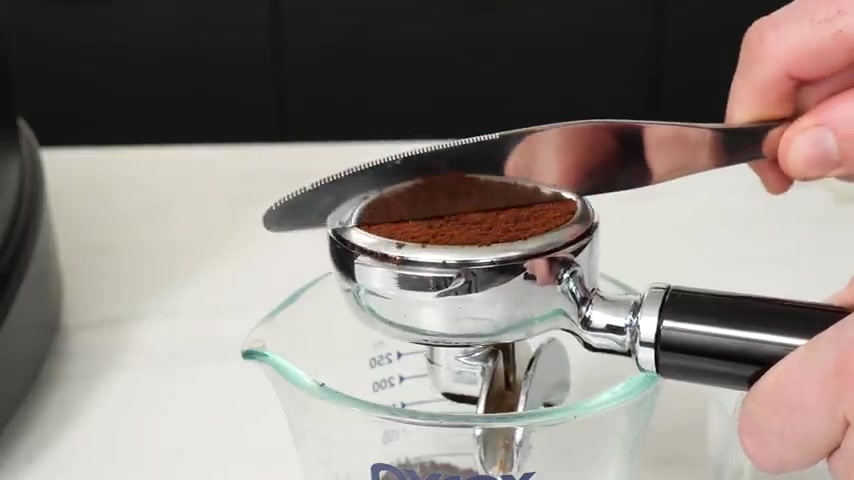
I found that if I use a straight edge like the backside of a butter knife or a business card to push around the coffee and fill in any low spots and then level it off .
Repeatability is usually within a couple of 10th of a gram .
If you're unsure how fast or slow your shot should be running .
Here's a little guidance .
If you don't have a scale yet to pull a standard double shot , you're aiming to get around two ounces of espresso including the crema in 20 to 30 seconds as a better method .
If you do have a scale , aim to get twice as much weight of espresso in your cup as ground coffee that you put in .
For example , if you dosed 18 g of ground coffee in , you're looking to get around 36 g of liquid espresso out in that same 20 to 30 seconds .
Some people start their timer the moment the pump kicks on while others prefer to start it when the first drop of espresso hits the cup .
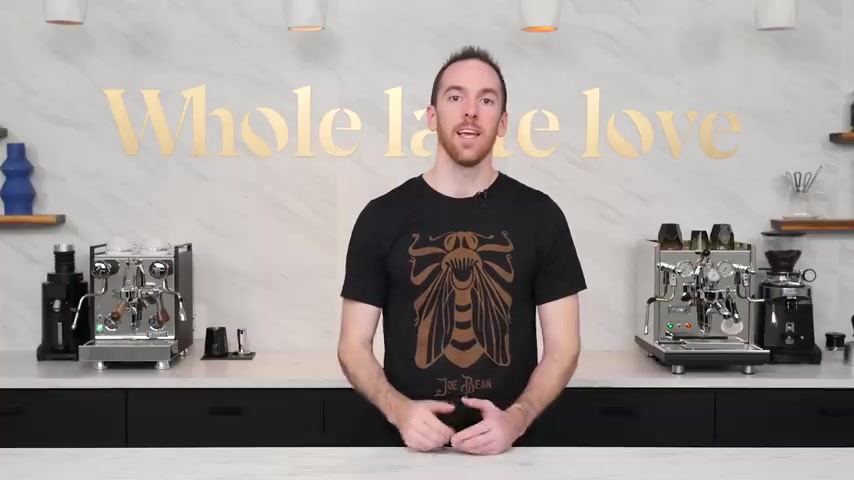
Since there's normally a 5 to 7 second delay between the two may be aimed toward the beginning of that 20 to 32nd range .
If you're timing by first strip or the end of that range , if you're going by pump on and remember that timing is just a basic method to get you in the ballpark .
And that taste should be your ultimate guide .
If you find that your shots are still too fast , even at the finest grind setting , you can slow them down by increasing your dose slightly .
Just be sure to compensate by increasing your output weight to keep that 1 to 2 ratio intact , at least for now until you move on to more advanced brewing techniques .
And remember that grind size is never set and forget differences in being type age temperature , humidity and more can affect your shot timing .
So you may need to make adjustments as time goes on to match your current conditions , you're all set up and dialed in .
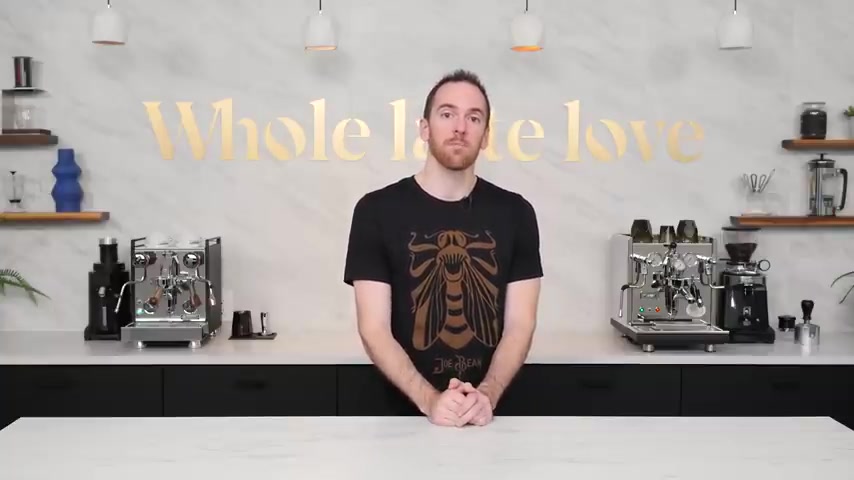
You pull a gorgeous shot with the proper flow rate .
You go to taste it and it tastes sour or on the flip side bitter .
Let's talk about what can cause this and how to fix it .
The taste characteristics of sourness and bitterness exist at opposite ends of the coffee spectrum and are most often the result of the level of extraction occurring while pulling your espresso shot before we dive into correcting these things .
Let's define each because sometimes they get mixed up sour flavors are the ones that make your face pucker .
Like you're sucking on a lemon , you generally sense them on the sides of your tongue and it's often quite overpowering with coffee .
These flavors are usually the result of under extraction bitterness .
However , is the feeling you get when you're eating dark chocolate or drinking a hoppy ip A you taste it on the back of your tongue and it can feel dry and astringent bitterness usually comes from over extraction .
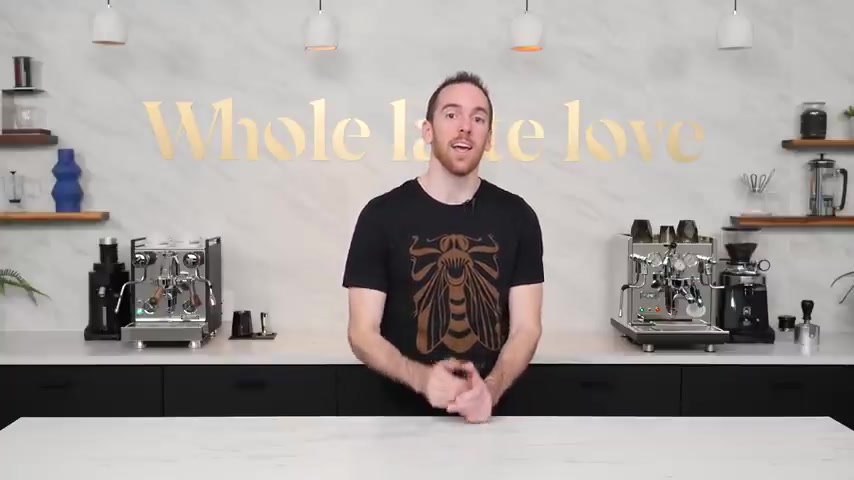
So if you've got sour shots , you should try increasing your extraction and there are several ways to do that .
Number one is to grind finer .
This actually helps in two ways .
The finer you grind , the more surface area your grounds have that are exposed to water , making it easier to dissolve the coffee solids into your cup .
The finer grind also slows down your flow rate , increasing contact time with the water and thus increasing extraction .
Another thing you can do is to pull a longer shot instead of that 1 to 2 brew ratio that I talked about in the last section .
Try 1 to 2.5 or 1 to 3 by pulling more water through the same grounds .
You can tame the sourness and create a more balanced shot .
The third thing you can do to increase extraction is to increase your brew temperature .
If your machine has API D temperature controller , try bumping up your brew water a couple of degrees to see if this helps bring out more of your desired flavors .
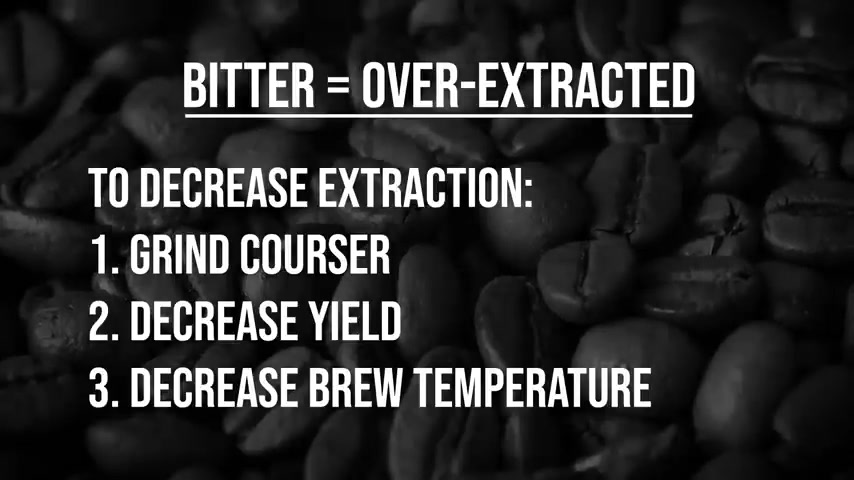
If you're trying to reduce bitterness , you want less extraction .
So you'll do the opposite of everything I just mentioned , grind coarser to reduce both the surface area and contact time , cut your shot early , maybe dropping down to a 1 to 1.5 brew ratio or decrease the temperature of your brew water .
If none of this helps look to your beans .
And more specifically , the roast level , fresh light roast generally have fruitier , more acidic profiles .
This acidity can often be confused for sourness .
Additionally , lighter roasts tend to be harder to extract .
So if you're getting sour flavors , even after trying everything I mentioned , maybe try switching to a medium or dark roast .
If you're getting bitter flavors , try a lighter roast .
Remember that taste perception and preferences are extremely subjective .
So something that tastes one way to me may taste different to you or you may just prefer that taste profile more than I do and that's completely OK .

Everything I'm saying here is to help guide you towards characteristics that you prefer .
So trust your own taste above everything else .
If you're still confused about the difference between sourness and bitterness or under and over extraction , you can try a little exercise called the salami shot which segments out your extraction allowing you to taste different stages individually .
For more information on this , click the link down below for a full video tutorial , oftentimes people new to espresso will get everything dialed in tasting great and are then concerned about why they aren't getting a lot of crema before we dive into .
Why let's talk about what crema is during the roasting process , carbon dioxide is produced and trapped inside of the beans .
That gas is slowly released as time goes on and more rapidly .
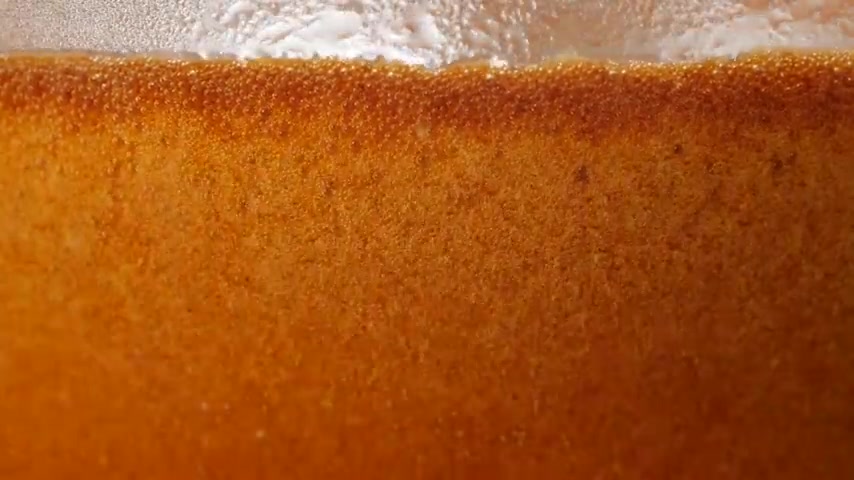
After grinding , when brewing in a pressurized system , such as when making espresso , the remaining co two inside the coffee is dissolved into the espresso solution .
Once the liquid escapes the porta filter and falls into your cup , the pressure is relieved and that gas separates out again in the form of tiny bubbles that eventually float to the surface and form that nice foamy layer of crema .
But does more crema make a shot taste better .
And if I'm not getting much crema at all , am I doing something wrong ?
The answer to both of those questions is not necessarily while crema can be a good indication of proper extraction techniques .
Having a lot of it is absolutely not necessary for a good shot .
And honestly , the crema itself is often the more better , less palatable part of the shot , which is why it's advised to mix it into the espresso before drinking to balance out the flavors .
If you do want more Krea , there are certain ways to achieve that fresher beans usually produce more crema .
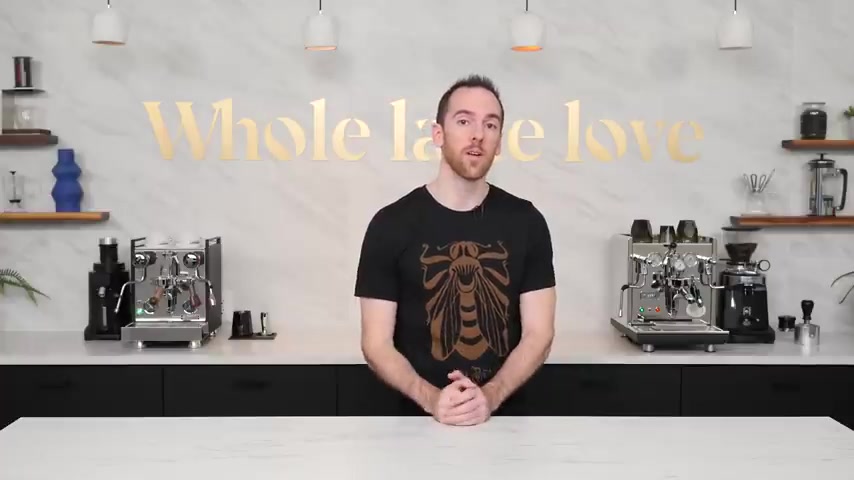
Since most of the co two is still trapped inside the bean , dark roast when fresh lead to more crema , but they also degas at a faster rate than lighter roast .
So over time as they age , this changes , lastly robusta beans often produce more crema than Arabica .
All that said , some people don't like robusta or dark roast or overly fresh beans .
So this all goes back to the overarching theme here .
If it tastes good to you , don't worry about how it looks or the amount of crema , you're getting one thing that will have a negative effect on your extractions is channeling through your puck water in a pressurized system will always try to find the path of least resistance to escape .
When brewing espresso that path is through your coffee grounds in a perfect world with uniform grind size distribution , proper puck prep and even water dispersion .
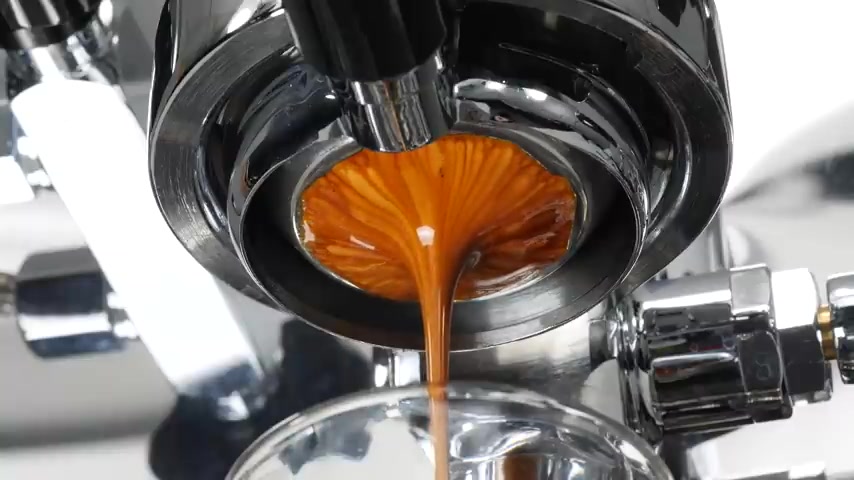
That path will gradually and evenly form across your puck as water dissolves and washes away the coffee solids in the real world .
However , a fault in any of these areas can lead to a channel or area of the puck where water can burst through over extracting the closest grounds while under extracting further ones .
The result is a muddy unbalanced shot with negative characteristics .
Presence from both under and over extraction .
The easiest way to monitor for channeling is to use a bottomless porta filter by eliminating the spouts .
You get an unobstructed .
Look at the distribution of water flow through the puck .
An ideal shot has the first ST drips forming evenly across all of the holes from there .
You may get a few drops or even briefly of multiple streams before they converge into one funnel coming down from the center for the duration of the shot .
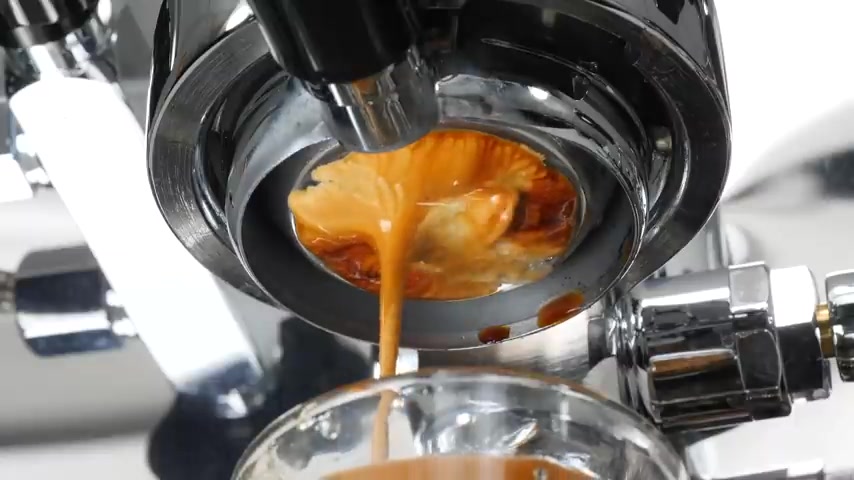
If you see an off centered stream gaps of unused holes with no flow through them spurts of water spraying out during your extraction or premature blinding .
In one section of the basket , you may have uneven distribution , improper tamping or channeling within the puck .
If you don't have a bottomless porta filter , examine the puck after you're done pulling your shot damaged pucks often indicate channeling whether it's several large craters in different parts of the bed or even a single tiny pinhole .
Again , channeling is often the result of improper grind distribution or pock preparation .
So the first place to start is with your pre brewing routine , depending on the tools you're using , you may want to W D T distribute level and or tamp your grounds to make sure they're as consistent as possible across the whole bed .
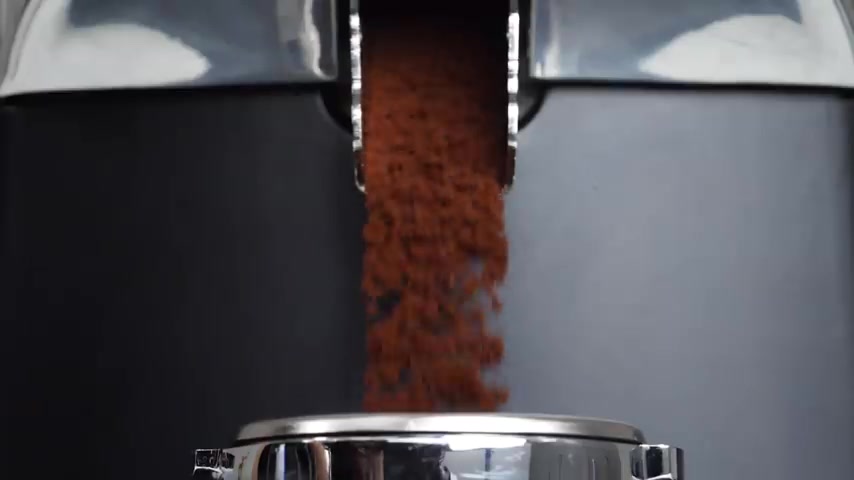
If it's still happening , you can try grinding a little coarser since an extra fine grind can sometimes cause too much resistance , forcing the water to find a better path .
Hopefully , this video helped solve some of your espresso extraction issues .
If you have any questions , feel free to leave a comment below and I'll get back to you .
And if you haven't , please subscribe to the channel by clicking the button right here and be sure to come back for more of the best on everything coffee brought to you by whole latte .
Love
Are you looking for a way to reach a wider audience and get more views on your videos?
Our innovative video to text transcribing service can help you do just that.
We provide accurate transcriptions of your videos along with visual content that will help you attract new viewers and keep them engaged. Plus, our data analytics and ad campaign tools can help you monetize your content and maximize your revenue.
Let's partner up and take your video content to the next level!
Contact us today to learn more.